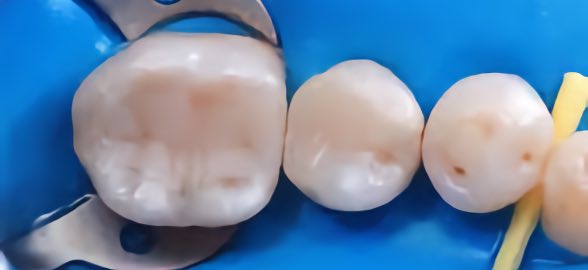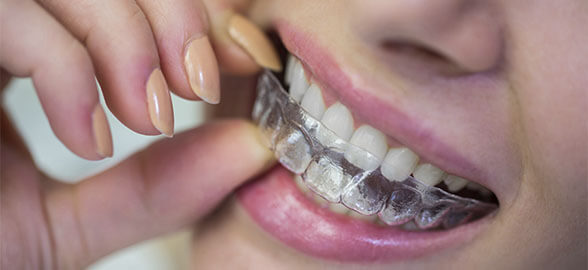In our third article of the series of blogs on sustainability in the dental clinic that we have prepared together with Gravity Wave, we will tell you how the waste generated by dental impressions is managed, a procedure widely used in dental clinical practice and that unfortunately generates a large number of waste, most of it is non-recyclable. Would you like to know how to consume printing materials responsibly and how to manage their waste? Read on and we'll tell you.
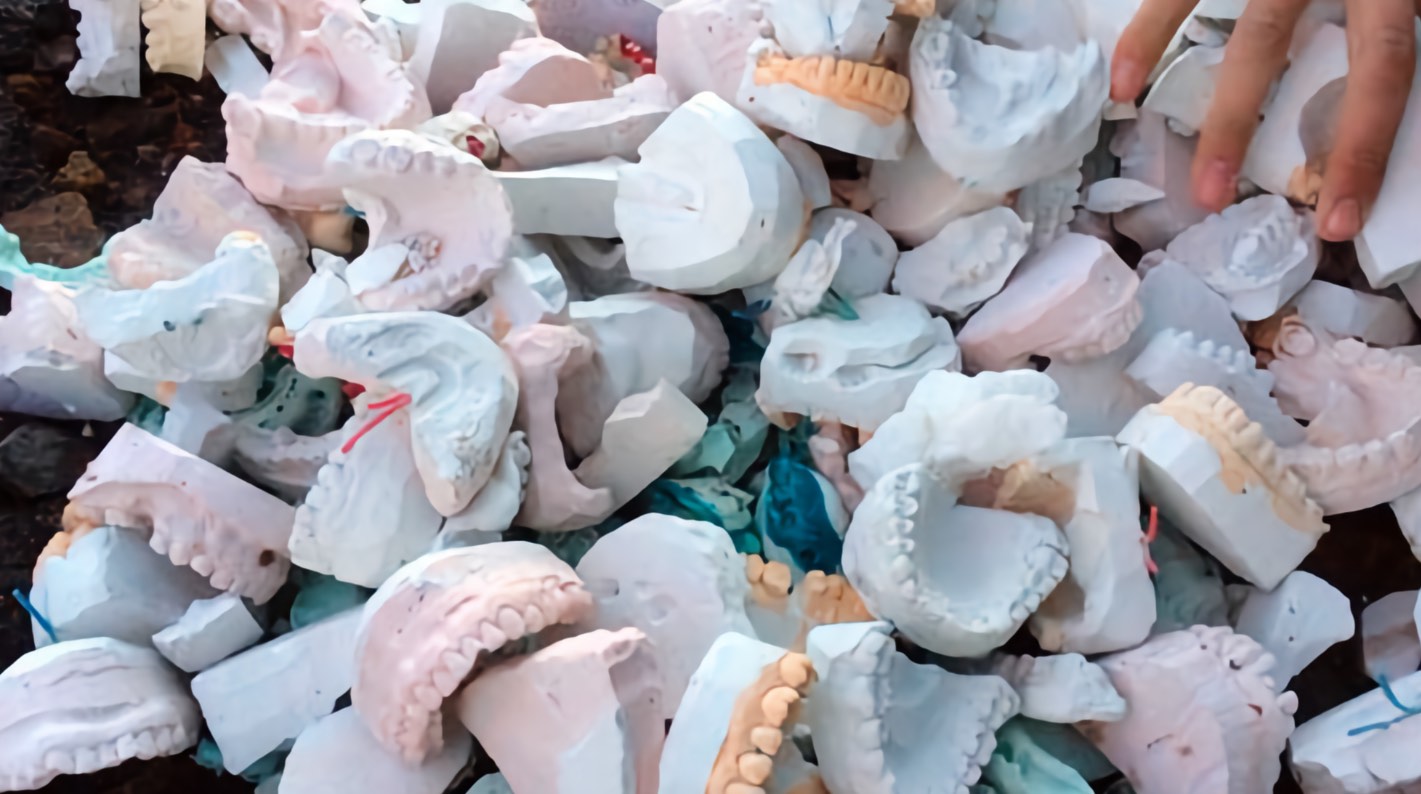
Most used dental materials in dental impression and casting
Dental impressions are negative models of the patient's mouth that are obtained with different materials depending on the degree of precision required. The most commonly used materials are irreversible hydrocolloids such as alginate and elastomers such as addition or condensation silicones and polyethers.
The second step after taking the impression is the casting of the model, which is done with a material of mineral origin: plaster. In turn, plasters are classified into different types according to their application and also according to the size, shape and porosity of their calcium sulfate crystals. In this article we will talk about plaster for dental use in a generic way, but if you want to know everything about dental plasters we invite you to read our article "Types of Dental Plasters and Casts: their Uses and Classifications".
Responsible consumption of printing materials
Responsible consumption of dental alginates
Dental alginate is an irreversible hydrocolloid that is used for impressions that do not require excessive detail, for example, to obtain study models. Some of the properties of alginates include slow setting, solubility, brittleness, dimensional stability and tear resistance.
It is important to know the composition of the alginate to note that the main components are organic:
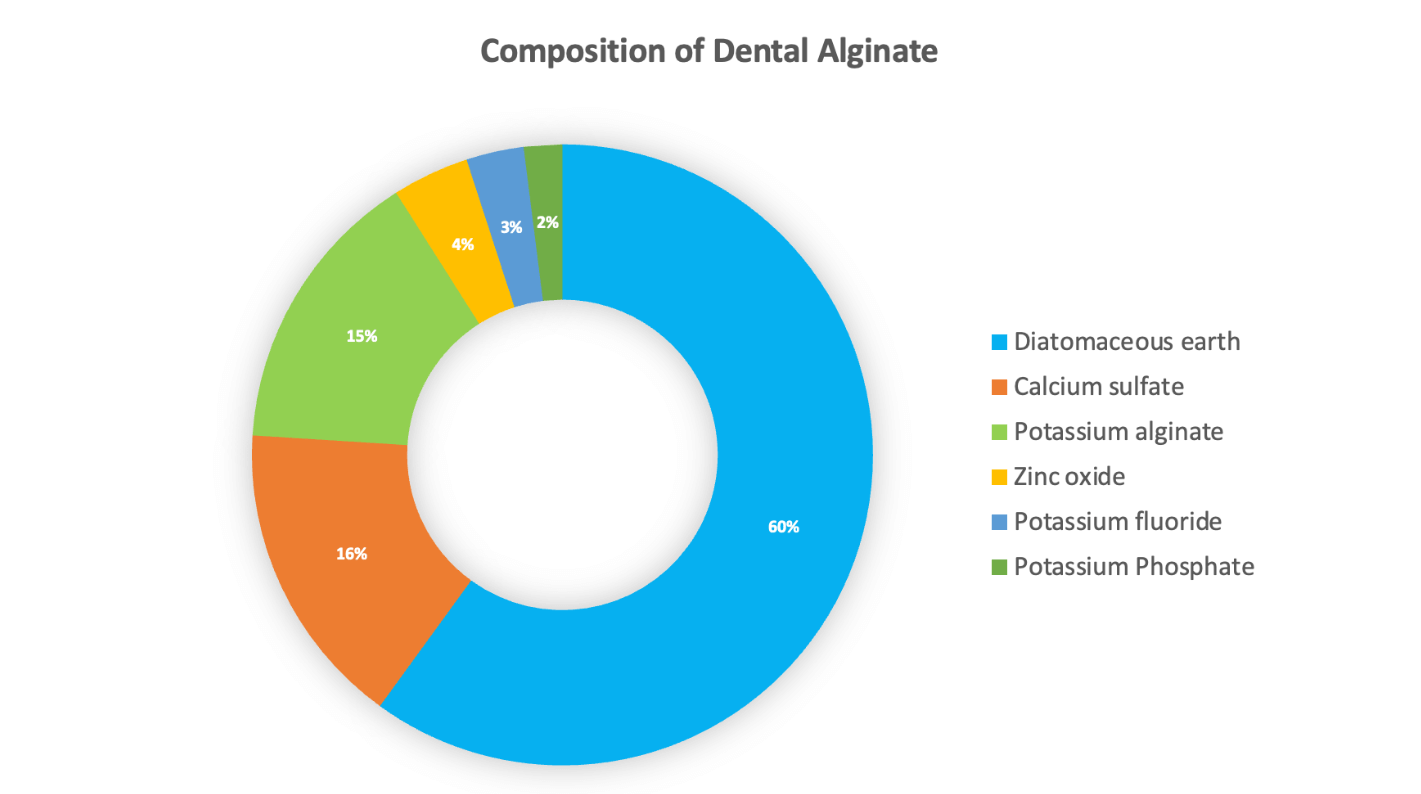
Due to its organic composition, the recommendation is to dispose of it in the gray container for remains or the brown container for organic waste, in the autonomous communities that have this container. With the waste that is deposited in the brown container it is possible to make compost, which is a biowaste that is useful as a fertilizer and as an energy generator.
Finally, keep in mind that the plastic container of the alginate can be washed and deposited in the yellow packaging container. Remember that in the dental clinic or laboratory there is a lot of waste that can be recycled and when we do not separate it and mix it with waste from the waste container, we take away the possibility of having a second life.
Responsible consumption of elastomers: silicones by condensation, silicones by addition and polyethers
Elastomeric-type impression materials are used in dentistry when more precise, high-fidelity models of teeth and their surrounding tissues are required. Hardening of these materials occurs by polymerization.
Undoubtedly, the most widely used elastomers are the silicones that were introduced to the market in the 1960s and are classified according to their polymerization reaction into addition silicones and condensation silicones.
Other materials that are widely used today are polyethers, which are very elastic materials that are similar to mercaptans and silicones, but tend to be more rigid and have a longer working time.
In terms of sustainability, all these materials are synthetic (not organic) and are made up of large polymer molecules linked by cross-links, forming a three-dimensional network. It is not possible to do without their use because they are the printing materials that offer greater precision and fidelity in the reproduction of details, in addition to many other superior characteristics.
Elastomers cannot be recycled, since, being chemically cross-linked polymers, they are not meltable or reusable. Since we cannot avoid generating this waste that must be disposed of in the gray waste container, the best we can do is use silicones and polyethers responsibly and efficiently. We invite you to read our blog 12 problems that we can fix to achieve the perfect dental impression that will help you achieve the ideal impression on the first try and thus reduce the use of this material by not having to repeat it.
Responsible consumption of plasters for dental use
Plaster is a material widely used both in the dental clinic and in the laboratory. It is obtained from the calcination of calcium sulfate dihydrate, then it is ground and subjected to high temperatures to remove the water from the crystallization process, obtaining calcium sulfate semihydrate (CaSO4 + H2O) as the final product. Plaster is an ideal material for use in dentistry as it sets quickly, reproduces details with very good precision and is highly resistant.
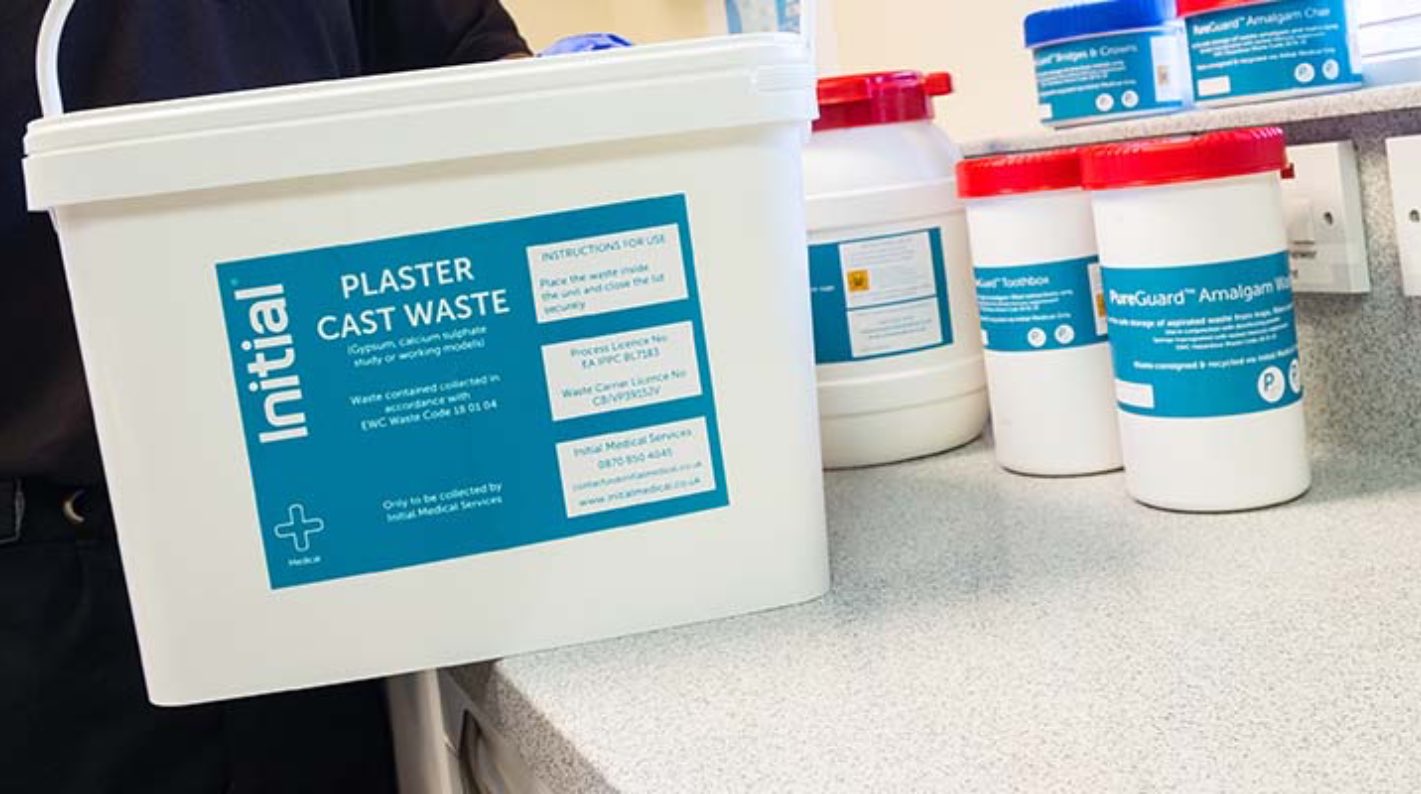
When we have already used the plaster models and it does not make sense to store them any longer, we should dispose of them, but how should we do it? Is plaster recyclable? We will try to solve these doubts.
The truth is that the removal of plaster, if carried out without any type of control, can be a serious and unknown problem, since as its final destination is a sanitary landfill or landfill, it is very likely that when it comes into contact with the water in Anaerobic conditions form calcium and sulfate ions, which can be transformed into sulfuric acid that affects pH and microbial life.
Various studies in the field of plaster used in construction mention the possibility of recycling plaster and even techniques that allow recycling 100% of the waste from laminated panels to later replace up to 25% of the natural plaster in manufacturing. of a new panel. In addition, the recycled plaster could be used for other purposes such as soil improvement, fat absorption and water treatment, among others. Although dental clinics do not produce the volume of plaster waste that the construction industry does, it is interesting to know that these materials can have a second life.
Today, perhaps the most appropriate recommendation on the management of plaster waste in the dental clinic is its elimination by an authorized waste manager. Another viable option is to take the waste to a clean point, making sure beforehand that they manage this type of material.
Digital printing as the most sustainable alternative
If what you want is to reduce 100% of the waste generated by your dental impressions and also add your dental clinic to digital transformation, the most sustainable alternative is digital impressions.
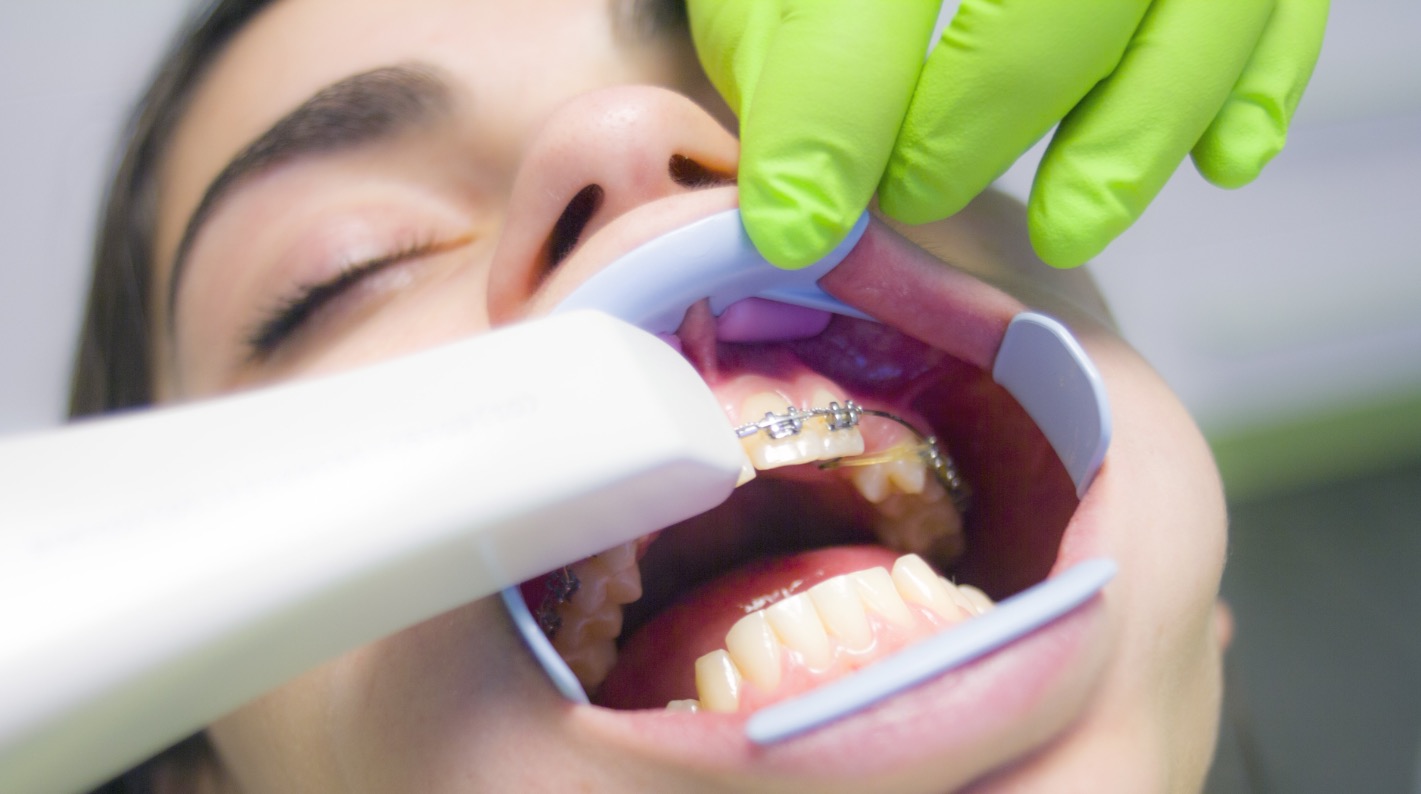
Digital printing will not only have benefits in terms of caring for the planet, but will also bring improvements in terms of quality, productivity and costs. The arrival of 3D technologies, compared to the traditional method of printing and making models, is undoubtedly a great advance in precision and manufacturing times, being able to offer your patients highly efficient solutions in a single consultation.
What is intraoral digital impression?
Intraoral digital impression also known as direct data collection, computer-assisted impression or intraoral scanning, is a technology that seeks to eliminate all the errors inherent in a traditional impression, to obtain a more precise result and allow direct entry into the digital workflow.
The digital impression is taken with an intraoral scanner that can be based on different technologies but has a single objective of digitizing the dental preparations and creating a virtual three-dimensional model (STL file). For this purpose, cameras capable of capturing images and processing them through software are used to obtain the final model.
There is currently a wide variety of intraoral digital scanners on the market that can be divided into two groups:
- Direct (in office): They allow the patient's mouth to be scanned and also to design and manufacture the restoration in the dental office.
- Indirect (out office): After scanning the patient's mouth, the virtual model is sent to the laboratory to design and make the restoration.
Now you know a little more about digital printing and how it can contribute to making your dental clinic a more sustainable place. If you are interested in this topic and want to delve into other digital initiatives, we invite you to read our article “Digital Transformation in Dentistry: Your Dental Practice's Greatest Asset”.
To make it a bit easier, here are the points to remember:
- By doing something small every time, like managing your print waste correctly, you can make a big difference in caring for our planet.
- Alginate is an organic dental material. It must be deposited in the gray container for waste and if your autonomous community has a brown container for organic waste, this is the most appropriate.
- Elastomers such as silicones and polyethers are synthetic materials and cannot be recycled, they should also be disposed of in the gray waste container. You can try to reduce its consumption as much as possible by making good use of the material and avoiding having to repeat the prints.
- Gypsum is a mineral material and its correct elimination prevents the generation of by-products that affect the pH of the soil and the microbial life. Gypsum is a recyclable material, however this initiative is not yet widespread in the dental industry. You can dispose of the remains or plaster models through an authorized waste manager or at a clean point.
- Always choose to use reusable and sterilizable impression trays. If your buckets are made of polypropylene (PP) you can deposit them in the yellow container once they reach their useful life. And if they are made of metal, they can be managed through an authorized waste manager.
- Product packaging is usually made of cardboard or plastic. Remember to deposit the cardboard of the boxes and the instructions or paper brochures in the blue container and the plastic containers in the yellow container.
- Intraoral digital impression is a 100% sustainable alternative that avoids all the waste generated by traditional dental impression.
We appreciate your interest in caring for the planet! Stay tuned and don't miss the last part of our blog series on sustainability in which we will tell you how to responsibly manage the toxic materials generated by dental clinics.
If you have questions, comments or simply want to stay up-to-date on all the news in the dental sector, we are waiting for you on our social networks. See you soon!.



